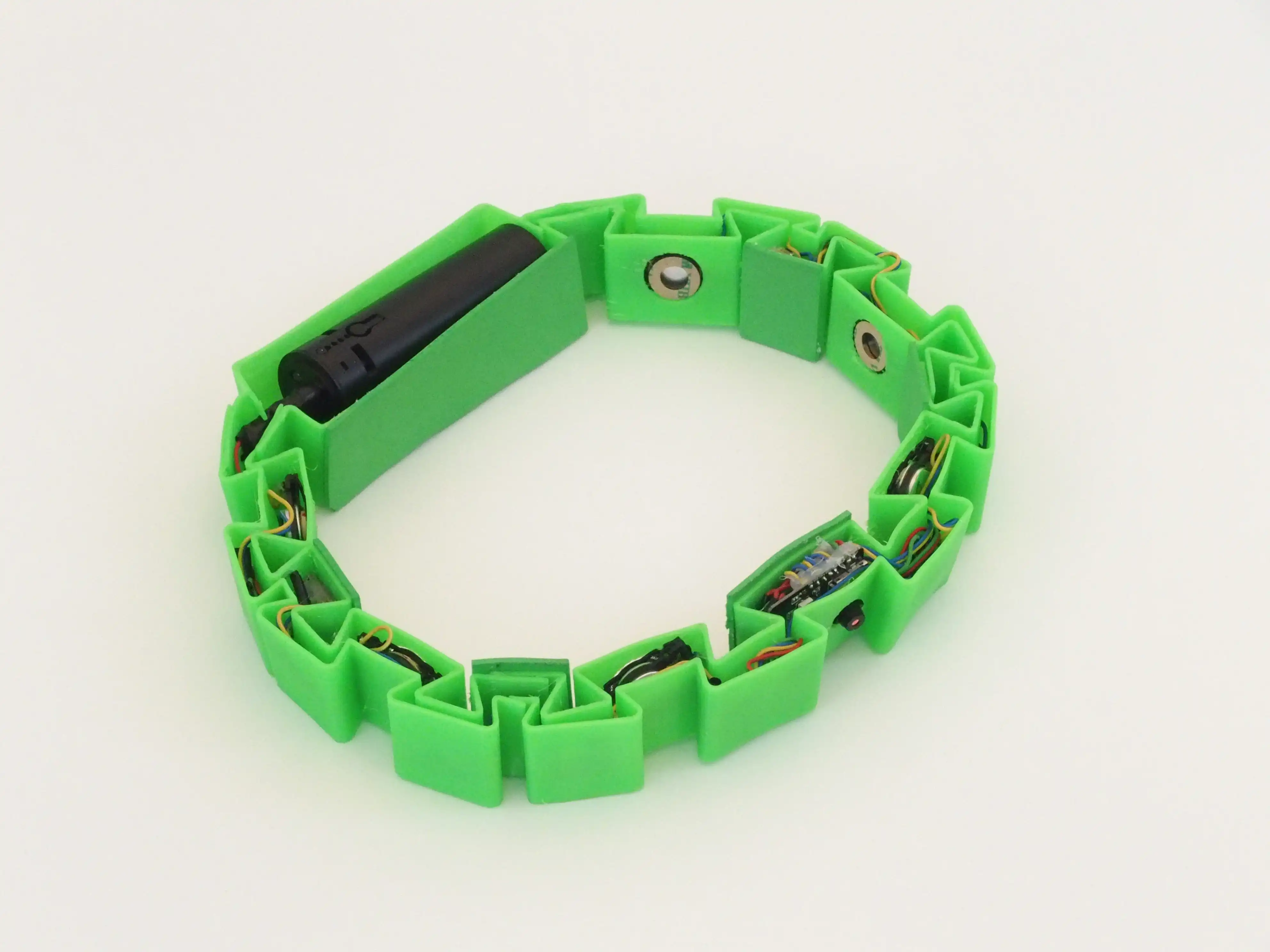ToxSense
A wearable device that enhances human senses to detect air quality and guide users through healthier urban paths.

ToxSense
Institute for Lightweight Structures, Design and Construction (ILEK)
Due to the lack of biological preparedness for urban air toxicity, humans cannot easily recognize the threats surrounding them in everyday life.
A simple body-worn device with a power source, camera, and minimal actuators could enhance human senses by sending haptically recognizable warning impulses to the user and guiding them through safer and more pleasant paths in the city. Images of the surrounding air, analyzed with the help of artificial intelligence (AI), could provide an approximate air quality factor and furthermore determine possible routes through the environment. This technology would function as a "new sense" that complements human senses. It would be a demonstration of possible human-computer interaction and the extension of human capabilities through technology that expands the ability to make more conscious decisions in everyday life.
We imagined the wearable device as a headband that expresses the technology it contains. Through its striking design, simply wearing the device would become a factor in raising awareness of harmful factors in the air and drawing the attention of the vast majority of citizens to today's air quality problem. A second level of information is the presence of a publicly accessible map with all collected sensor data, constantly updated with real-time measurements. By training a machine learning model to recognize air quality from images, anyone with a camera and internet connection can contribute to collecting such data, thus creating social engagement that ensures both constant data and more recognition and understanding of air quality.
Furthermore, the constant collection and evaluation of air data, driven by artificial intelligence, enables an extremely detailed analysis of the impact of the built environment on air quality. These new insights can thus make an important contribution to previously unrecognized healthier concepts of urban planning.
Team:
Maria Radulescu
Marcus Pfaff
Timo Bilhöfer